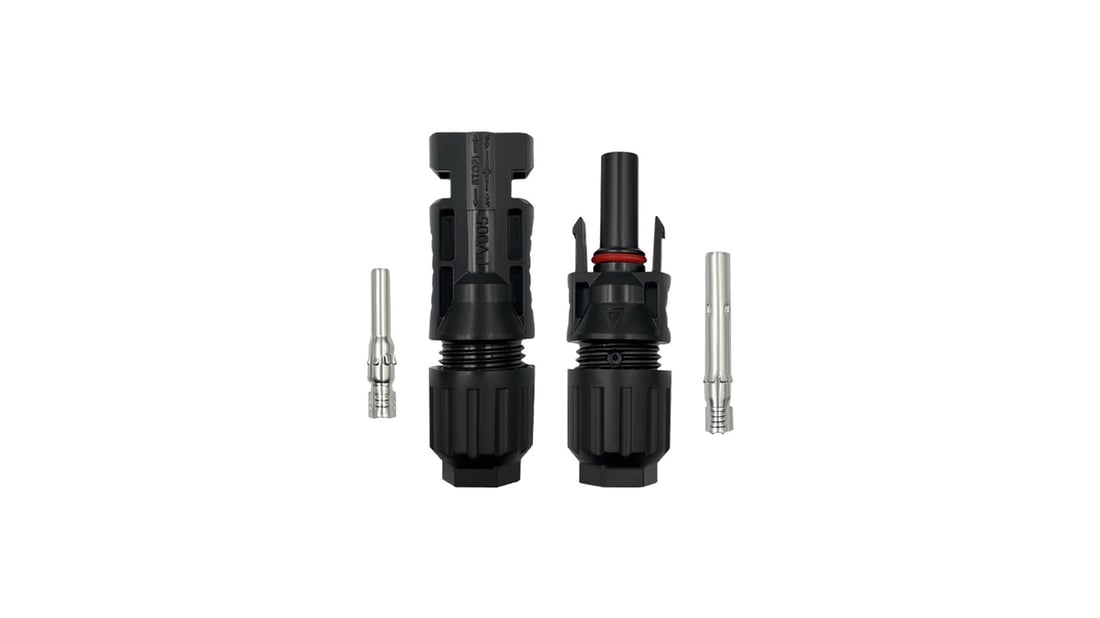Introduction
Solar energy is becoming increasingly popular as a renewable and sustainable source of power. As more and more individuals and businesses adopt solar panels to harness this energy, it is essential to understand the importance of solar panel cable connectors. These connectors play a vital role in ensuring the efficient and reliable generation of solar power. In this article, we will explore the various aspects of solar panel cable connectors, their significance, and how they contribute to the overall performance of solar energy systems.
The Basics: What are Solar Panel Cable Connectors?
Solar panel cable connectors, also known as solar cable connectors or photovoltaic connectors, are specialized electrical connectors used to connect solar panels to each other and to the rest of the solar power system. These connectors are designed to handle the unique requirements of solar energy systems, including high voltages, outdoor exposure, and extreme weather conditions.
Ensuring Safety and Reliability
One of the primary purposes of solar panel cable connectors is to ensure the safety and reliability of solar power systems. These connectors are engineered to withstand high voltages and currents, minimizing the risk of electrical accidents and system failures. They are also designed to be weatherproof and resistant to UV radiation, ensuring long-term performance even in harsh environmental conditions.
Efficiency and Performance Optimization
Efficiency is a crucial factor in solar power generation, and solar panel cable connectors play a significant role in optimizing system performance. These connectors are designed to minimize power losses and voltage drops, ensuring that the maximum amount of solar energy reaches the inverter for conversion into usable electricity. By reducing energy losses, solar panel cable connectors contribute to overall system efficiency and maximize the power output of solar panels.
Types of Solar Panel Cable Connectors
There are several types of solar panel cable connectors available in the market, each designed for specific applications and system configurations. The most common types include MC4 connectors, Amphenol connectors, and Tyco connectors. MC4 connectors, with their unique locking mechanism, are widely used in residential and commercial solar installations. Amphenol connectors are known for their high current-carrying capacity, making them suitable for large-scale solar power plants. Tyco connectors, on the other hand, are often used in industrial applications where durability and ruggedness are paramount.
Installation and Maintenance
Proper installation and maintenance of solar panel cable connectors are critical to ensure optimal system performance and longevity. During installation, it is crucial to follow the manufacturer's guidelines and use the appropriate tools to achieve secure and reliable connections. Regular inspections and maintenance checks should also be conducted to identify any signs of wear, damage, or loose connections. Timely replacement of faulty connectors can prevent potential issues and maintain the efficiency of the solar power system.
Compatibility with Other Components
Solar panel cable connectors need to be compatible with other components of the solar power system, such as inverters, charge controllers, and batteries. It is essential to select connectors that are compatible with the specific voltage and current requirements of the system. Using incompatible connectors can lead to compatibility issues, reduced system performance, and potential electrical hazards. Consulting with a professional solar installer or system designer can help ensure the proper selection and compatibility of connectors and other system components.
Importance of Proper Sizing
Proper sizing of solar panel cable connectors is crucial to prevent power losses and ensure the safe and efficient operation of the system. Undersized connectors can lead to excessive heat generation and voltage drops, reducing the overall performance of the solar power system. Oversized connectors, on the other hand, can be inefficient and costly. It is essential to consult the manufacturer's specifications and guidelines to determine the appropriate connector size for the specific solar panel configuration and system requirements.
Considerations for Long-Distance Installations
In some cases, solar panels may be installed at a considerable distance from the inverter or power distribution point. When dealing with long-distance installations, additional considerations need to be taken into account. The use of thicker gauge cables and connectors with lower resistance can help minimize power losses over long distances. It is also important to ensure proper cable management and protection against potential damage from environmental factors, such as rodents or extreme weather conditions.
Conclusion
Solar panel cable connectors are a critical component of solar power systems, ensuring safety, reliability, and optimal performance. By choosing the right connectors, properly installing and maintaining them, and ensuring compatibility with other system components, solar energy system owners can maximize the efficiency and longevity of their installations. Investing in high-quality solar panel cable connectors is a worthwhile step towards harnessing the full potential of solar power and contributing to a more sustainable future.

